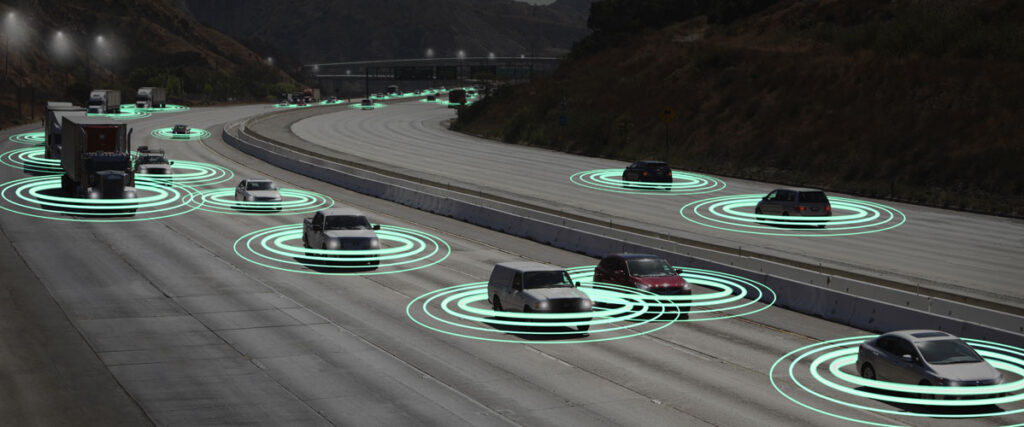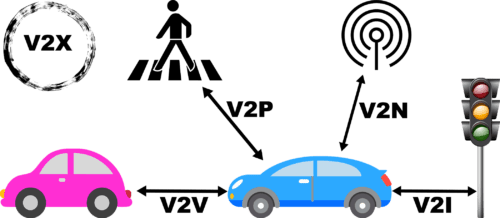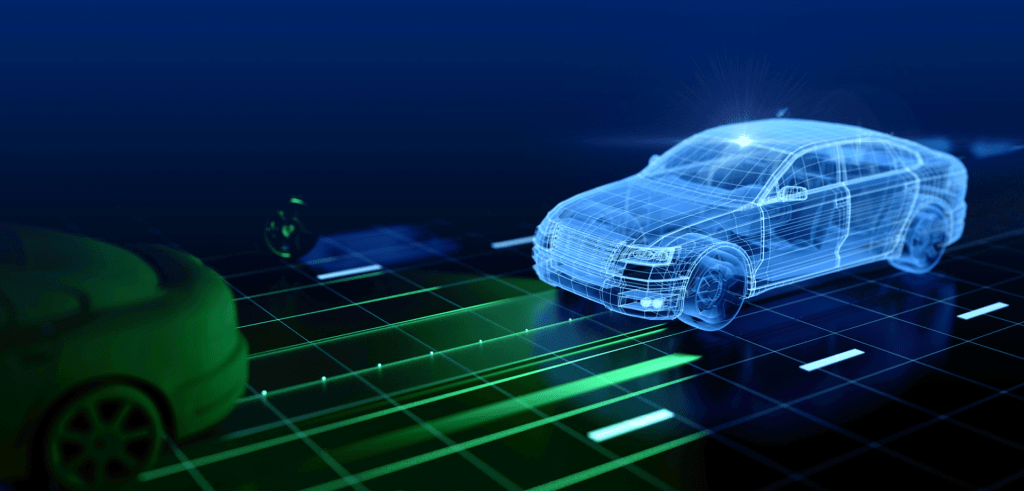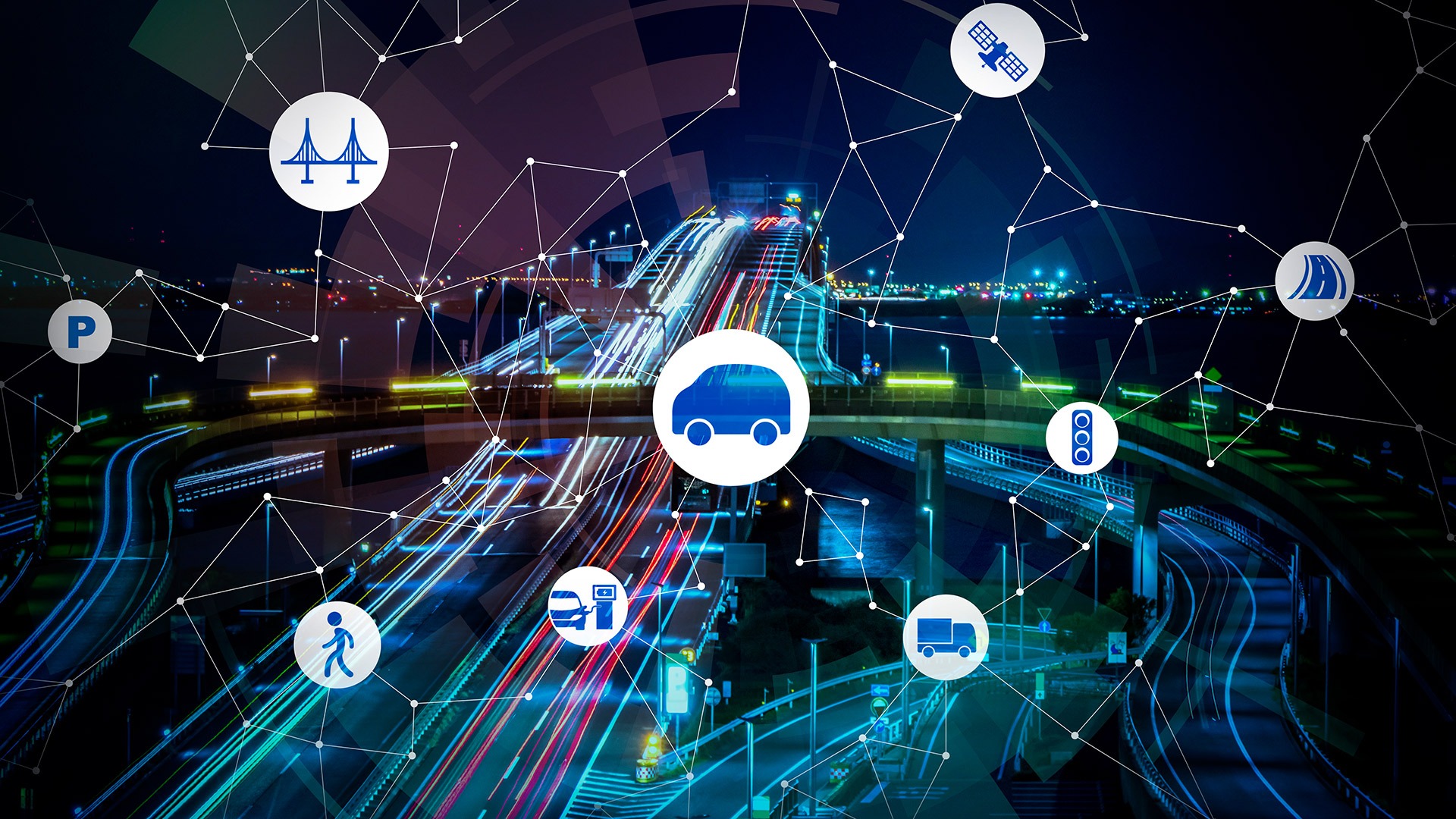These days, almost all the devices, even simple ones, are connected, allowing them to perform functions that would otherwise be impossible due to their small size. While automobiles have long been capable of receiving information such as radio signals and satellite navigation, few have been completely “connected” and capable of two-way communication.
If you already own or have driven a car manufactured in the previous five years, you’ve probably seen touchscreens, navigation, and other creative features that connected smartphone technology has brought to the automotive sector. Imagine your next automobile receiving software updates from the cloud and communicating with other vehicles and even infrastructure like road signs to provide a complete view of what’s happening out there.
V2X (vehicle-to-everything) technology promises to make this a reality. V2X is already present in numerous vehicles and roadside equipment, but its full potential has yet to be realized. Read on to discover the fundamentals of V2X if you’re new to connected automobiles and related technology.
What Exactly Is V2X?
The world is filled with weird acronyms, and this one is no exception. The term “vehicle-to-everything,” or V2X, refers to all of a vehicle’s connected communications. The main concept is that a car may (or will be able to) use its onboard communication facilities:
- To transmit real-time traffic information
- Adapt to changing traffic conditions in advance
- Detect road signs and warnings, and more
V2X functions alone will not be able to handle a vehicle without a driver, they are critical components in an autonomous vehicle’s ability to put together a picture of its surroundings. There are various other “vehicle-to” points of interest within the V2X stable.
How Does V2X Communication Work?

In a V2X system, data is exchanged via high-bandwidth, high-reliability links. Every car has a sensor that feeds data to other cars, traffic signals, parking spots, pedestrians, etc.
These V2X systems exchange data on speed and other elements around the vehicle. This data helps drivers be aware of traffic conditions, nearby accidents, emergency vehicles, roadwork signs, and other cars on the same path. It also warns drivers of possible risks, reducing the chance of road accidents and injury.
V2X Technology’s Components

Vehicle-to-vehicle (V2V), vehicle-to-infrastructure (V2I), vehicle-to-pedestrian (V2P), and vehicle-to-network (V2N) communications are all parts of V2X. Vehicles will communicate with other vehicles, infrastructures such as traffic signals or parking spots, smartphone-wielding pedestrians, and datacenters via cellular networks in this multidimensional ecosystem. Distinct use cases will have different needs, which the communications system must be able to handle quickly and easily.
- V2V is a wireless data transfer between vehicles. The system can send data from surrounding vehicles within a certain range, allowing drivers to take preventative measures early.
- V2I (vehicle-to-infrastructure) technology allows vehicles to communicate with roadside equipment. Depending on the location, cameras, lights, and signs may be connected.
- V2P (Vehicle-to-pedestrian) communications allow cars to avoid collisions by connecting to pedestrians’ mobile devices. This includes those walking, cycling, or taking public transportation.
- V2N (Vehicle-to-network) (V2N) technology connects vehicles to data centers, roads, and other vehicles. To improve navigational accuracy or change routes, a V2N-connected car can communicate with other vehicles.
What Is DSRC Communication and How Does It Work?
The initial V2X standard, DSRC (Dedicated Short Range Communications), allows vehicles to interact with each other and with infrastructure over the air using IEEE 802.11P-compliant communications (a new standard for vehicular safety communication using wireless networks). This connects two V2X senders in close proximity and enables them to interact without using a particular communication device. Because of this, DSRC is well-suited to less-developed locations.
The DSRC standard then goes on to offer information about toll payments and accident warnings. It uses the unregistered 5.9GHz band and operates short-range, i.e., less than 1 kilometer. One of the most appealing aspects of this standard is that it is undisturbed by weather. It can thus scan the environment and offer precise information even in the presence of rain, fog, or snow.
What Is C-V2X Communication and How Does It Work?

The Cellular V2X is a cellular version of DSRC that utilizes LTE as its foundation. The usage of this technology is strongly supported by Qualcomm and the 5G Automotive Association.
One of the best features of C-V2X is that it has multiple operational modes from which consumers can choose. The first mode uses the PC5 interface. PC5 is a point when a User Equipment (UE), such as a mobile phone, directly communicates with another UE. This is to provide low-latency Cellular-V2X Direct Communications on the unlicensed 5.9GHz frequency. This mode is intended for transmitting active safety signals such as collision alerts and other V2I, V2V, and V2P circumstances across short distances. This mode is quite similar to what the conventional DSRC standard provides.
<BR>
The second mode occurs on a licensed regular band cellular network using the Uu interface. This mode is used primarily to manage V2N use cases like latency-tolerant safety notifications and entertainment, as well as traffic conditions. Because this mode does not use cellular connectivity, DSRC can only match it by making ad hoc links to base stations along the road.
The two competing technologies, DSRC and C-V2X, compete for the attention of key automakers and regulators as the V2X market develops traction. It’s worth noting that, in recent months, the momentum has flipped in favor of C-V2X, with a growing number of automakers, including Audi, Ford, BMW, Jaguar, Geely, and Daimler, pledging their support.
Benefits of V2X Technology
V2X is an incredible technology that allows vehicles to connect with their surroundings and each other over a one-mile distance. Here are a few prominent advantages of V2X technology.
5G technology has exceptionally low latency, or the time between sending and receiving data. With 5G, we go from 200 ms for 4G to 1 ms.
Just consider—1000th of a second. The average reaction time for humans is 250 ms, or 1/4 second. With adequate training, people can hit 190-200 ms. Imagine your car reacting 250 times faster than you. Imagine it can respond to hundreds of incoming signals and communicate with other vehicles and traffic signs in milliseconds.
At 60 mph (100km/h), the reaction distance is around 33 yards (30 meters). The car would have rolled little more than an inch in 1ms (less than 3 centimeters).
i. Improving Traffic Safety
Vehicle-to-everything communications have the ability to prevent or minimize the seriousness of the greater part of traffic accidents by allowing cars to anticipate and avoid collisions much before a human driver can. V2X, for example, might prohibit vehicles from running a red light, even if their drivers are incapacitated, by sensing an approaching red light and bringing the car to a complete stop.
Likewise, V2X might notify other vehicles approaching a junction of a possible collision, and automated technology may brake or change a vehicle’s direction of travel even before a driver could see or detect the difficulty. Pedestrians and bikers would be alerted of potential threats, and motor vehicles in close proximity would automatically brake or steer to avoid it. And also, the system becomes more predictable when everything is connected. Because most of them are predictable, we can anticipate arrival times with greater accuracy.
So we might increase speed limits proportionately where public safety is not jeopardized, because everything is predictable and requires less reaction time.
ii. Save time
V2X technology can also help to improve road traffic flow and reduce traffic congestion. This can save everyone a lot of time. When cars interact with traffic lights, street signs, and traffic control centers, they can quickly identify crowded regions and pick the best route to their destination. A data interchange between a vehicle and traffic lights, for example, can aid in determining the speed at which the vehicle must go in order to catch the green light. This real-time data sharing facilitates time savings.
iii. Affordability
It is easier to establish an efficient and safer transportation system with V2X technology, which will help save money. According to various research, blocked or congested roads reduce productivity, cause supply chain delays, and raise business costs. V2X, on the other hand, allows vehicles to detect traffic congestion and change routes in real-time. This, along with simulation models to optimize routes, can significantly improve the efficiency and organization of transportation.
iv. Environmental Aspects
One of the most significant advantages of V2X is that it reduces transportation’s impact on the environment. Platooning, for example, allows self-driving automobiles to accompany each other with extremely little space between them. This results in lower fuel usage as well as lower CO2 emissions.
v. Driving Convenience
Driving has become much more comfortable because of V2X technology, which allows drivers to see what is otherwise beyond their line of sight far in advance. They can anticipate traffic jams, congested locations, and road hazards and take appropriate precautions. This improves the safety, comfort, and enjoyment of road travel.
Implementation and Adoption Challenges
Why don’t we all ride in cars that interact with one another and with the environment? Implementing a far-reaching, universal communication system, it turns out, isn’t nearly that simple.
i. Privacy
Many people value their privacy, so it’s simple to see how a vehicle communications system that sends and receives data without driver involvement could be concerning to some. Many people are wary of new technologies due to concerns about location privacy, hacking, and personal security, making V2X a rugged cliff to climb. V2P technology, which requires people to use their mobile devices as part of the communication framework, further complicates the picture.
ii. Infrastructure
Infrastructure must be in place to handle connected vehicles that can successfully communicate with their environment. Updating signage and other road improvements to make space for V2X is not only costly, but it’s also challenging to work that necessitates forethought and inventiveness, which can be a massive task for cash-strapped towns.
iii. Legislation
Although the United States is a country, it is run by 50 different governments. Some states have radically different driving laws than others, including those next door. Imagine that each state is responsible for coordinating a technological deployment that is consistent, predictable, and adheres to a widely established communication standard. It doesn’t appear to be that simple. The speed, adoption, and prices of V2X will be determined by how states make rules and govern them, which will delay the technology’s adoption in vehicles, roads, and neighboring areas.
Advancement of V2X Technology
Although the V2X business is still in its early stages, most manufacturers have begun to incorporate the technology, and vehicles are gradually becoming connected to other vehicles and infrastructure. Automobiles are also getting more sophisticated, with less human intervention technology. As a result of the adaptive cruise control and sensors, the users will benefit from safer, healthier journeys with reduced CO2.
Furthermore, the total value of V2X systems will need time to realize since a vehicle should communicate with an object equipped with V2X technology for the vehicle to speak with the object.
Many structures, such as parking spots, traffic signals, and traditional automobiles, lack V2X systems, which means they cannot connect with vehicles that do.
Vehicles outfitted with V2X systems will talk with other vehicles, traffic systems, and other road users such as cyclists as the V2X industry grows.
“Although the V2X (Vehicle-to-Everything) sector is relatively young, many companies have already begun using this technology. The upshot is safer travel, lower carbon emissions, and improved route planning.”


